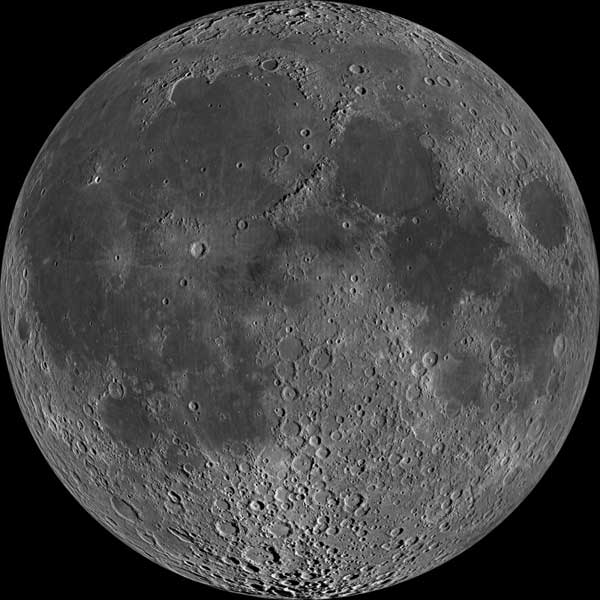SuperMoon
![]()
A SuperMoon is a New or Full Moon which is extra close to the Earth, within 90% of its nearest approach to Earth in a given orbit. There can be 4-6 SuperMoons a year by this definition. In 2014 there are 5 SuperMoons – the two New Moons of January and the Full Moons of July, August and September.
When a SuperMoon is a New Moon, observers on Earth cannot see it because its illuminated side faces away from the Earth toward the Sun. Helpful Image + Description A New Moon lies between the Sun and Earth. The only time a New Moon can be seen is during a solar eclipse, when it passes directly in front of the Sun, visibly showing off part or all of its entire dark disk.
The closer the Moon is to the Earth the larger it appears and the greater affect it has on tidal waters, creating higher than usual tides. Some have noticed that the gravitational force of a SuperMoon affects the atmosphere and crust of our planet, as well as the surge of feeling and events on Earth.
This web page highlghts the closest SuperMoon of the year that is a Full Moon. A SuperMoon that is a Full Moon appears bigger or extra full to those viewing it from Earth. A Full Moon lies opposite the Sun; the Earth lies between them. A Full Moon opposite the Sun is seen from sunset to sunrise. A SuperMoon is a perigee-syzygy event. Keep reading to learn more.
SuperMoon
~ Extra Full Moon ~ Perigee-Syzygy Event
Sirius~Leo Cosmic Festival Full Moon
Exact Full Moon: Sunday, Aug. 10, 2014 – 11:09am
PDT (18:09 UT)
Lunar Nearside -
Astronomy Picture of the Day 3/3/11

Image: NASA / GSFC / Arizona
State Univ. /
Lunar
Reconnaissance Orbiter
Note: The exact Full Moon timing allows many observers to see an extra large Moon two nights—Saturday night, Aug. 9 and Sunday night, Aug. 10. In addition, if you're up before sunrise Sunday morning, look for largest Luna above the western horizon.
BTW: In 2014 the Perseid Meteors vs.the Supermoon. Look northeast around midnight until just before dawn. Peak night for the Perseid meteor shower is August 12/13.
Image Explanation: About 1,300 images from the Lunar Reconnaissance Orbiter spacecraft's wide angle camera were used to compose this spectacular view of a familiar face - the lunar nearside. But why is there a lunar nearside? The Moon rotates on its axis and orbits the Earth at the same rate, about once every 28 days. Tidally locked in this configuration, the synchronous rotation always keeps one side, the nearside, facing Earth. As a result, featured in remarkable detail in the full resolution mosaic, the smooth, dark, lunar maria (actually lava-flooded impact basins), and rugged highlands, are well-known to earthbound skygazers. ... The LRO images used to construct the mosaic were recorded over a two week period last December [2010]. Astronomy Picture of the Day 3/3/11 ~ Current Astronomy Picture of the Day
To find your favorite mare or large crater, just slide your cursor over this APOD Image; its web page gives APOD's full explanation and all the links for the "Lunar Nearside" mosaic shown above.
SuperMoon
~ Extra Full Moon
Perigee-Syzygy Event ~ The Honey Moon
The Perigee
The Moon's orbit is not a perfect circle. Every 27.55 days, the Moon swings closer to Earth and then loops farther away in an unending cycle of perigees and apogees. Helpful Image
The Full Moon of Sunday, Aug. 10, 2014 (11:09am PDT / 18:09 UT) is at a SuperMoon perigee, within 90% of its nearest approach to Earth in a given orbit. It is at its closest lunar approach for the month and for the year of 2014.
Full Moons that occur on the perigee side of the Moon's orbit seem extra big and bright. This coincidence happens three times in 2014. On July 12th and Sept 9th the Moon becomes full on the same day as perigee. On August 10th it becomes full during the same hour as perigee—arguably making it an extra-super Moon. NASA: Three Supermoons in a Row
At perigee the Aug. 10 Moon lies 221,765 miles from Earth (356,896 kilometers).
The Moon averages about 240,000 miles [386,000 km] from Earth but can get as close as 221,441 miles [356,520 km] and as far as 252,723 miles [406,884 km]. That's a range of over 30,000 miles [48,300 km]. Star Gazer: 2011 Script 3/7-15
Perigee
Full Moon Table
These
close Moons occur about every 1 year, 1 month, and
18 days or the 14th Full Moon after a perigee Full Moon.
Lunar Perigee / Apogee Calculator
The biggest Full Moons of the year appear 14% bigger and 30% brighter than lesser Full Moons. Helpful Image A perigee Moon creates higher than usual "perigean tides". However, according to NASA, these are only a few centimeters (an inch or so) higher than usual. Local geography can increase the effect to about 15 centimeters (six inches). Richard Nolle has more to say about the potential effects of perigee SuperMoons in "The Sysygy" section below.
A Moon near the horizon always looks bigger due to The Moon Illusion. Be sure to catch this two-day "Extra" Full Moon when it rises in the east Saturday, Aug. 9, around 7:15pm, sets in the west Sunday, Aug. 10, around 6:00am, and when it rises again in the east Sunday, Aug. 10 about 8:00pm. Click Rise/Set/Transit Times ~ Major Bodies for exact times in your area.
The Syzygy
When three or more astronomical bodies, in a gravitational system, form a roughly straight line, we have a syzygy (siz-i-jee). The Aug. 10, 2014 "Extra" Full Moon, as with all Full Moons, forms a straight line with our Earth and Sun (Moon-Earth-Sun), a syzygy.
Richard Nolle calls the perigee-syzygy Full Moon a SuperMoon, which has the potential to stir up powerful tides in the Earth's atmosphere, crust and oceans.
SuperMoon is a word I coined in a 1979 ... describing a new or full moon which occurs with the Moon at or near (within 90% of) its closest approach to Earth in a given orbit. ... At any new or full moon, Earth and Moon and Sun are all in a line: Earth is in the middle in the full moon alignment, while the new moon happens with Moon in the middle. This coming together in an alignment is technically termed a syzygy. ... when the Moon is in its perigee, or closest approach to Earth. Astronomers call this very special alignment a perigee-syzygy. I call it a SuperMoon – which is a whole lot easier on the tongue.
... From extreme coastal tides to severe storms to powerful earthquakes and volcanic eruptions, the entire natural world surges and spasms under the sway of the SuperMoon alignment - within three days either way of the exact syzygy, as a general rule. ... For most of us, the geocosmic risk raised by SuperMoon alignments will pass with little notice in our immediate vicinity. ... A SuperMoon is planetary in scale, being a special alignment of Earth, Sun and Moon. ... it’s planetary in scope, in the sense that there's no place on Earth not subject to the tidal force of the perigee-syzygy. Of course, earthquakes and volcanic eruptions don't go wandering all over the planet. They happen in (mostly) predictable locations, like the infamous "Ring of Fire" around the Pacific plate.
Examples of the SuperMoon connection with major storms and seismic events abound [Nolle provides examples]. ... I’m far from the first person in history to notice the connection between lunar perigee-syzygy and powerful tides stirring up Earth’s atmosphere, crust and oceans. Richard Nolle's Full Article: SuperMoon What It Is, What It Means
The Aug 10, 2014 perigee-syzygy Full Moon line-up is grander, including Neptune, the Moon, Earth, Sun and Mercury. This solar system view for the exact time of the Full Moon shows Neptune (trident), Moon (not shown), Earth (blue), Sun (yellow) and Mercury (green). The SuperMoon (not shown in the image) and Nepturne are tugging on one side of the Earth while Mercury and the Sun are tugging on the opposite side of Earth. BTW: Mars (red) and Venus (white) are in syzygy alignment on opposites sides of the Sun.
In addition, the gravitational pull of the syzygy SuperMoon and planets aligned on opposite sides of the the Sun may disturb the quietude of the Sun, causing sunspots, solar flares and coronal mass ejections (CME's). Solar Glossary
The Sun, now in its active cycle, a solar mini-max, already increases the likelihood of power grid overloads/outages and satellite disruption [*, *]. Gravitational tugging on our Central Luminary may mean more solar disruption. Solar activity may also increase earthquakes, volcanic activity and extreme weather [*], however this concept is not well understood nor agreed upon. Solar cycles and their activity can irritate one's physical, mental and emotional bodies and/or bring about a heightened sense of awareness [*], again this concept is not well understood nor agreed upon.
Hmmm ... Spaceweather.com describes the increasing solar activity of March 9-10, 2011 preceding Japan's March 11 quake/tsunami. It is also interesting to note that 8 days following Japan's quake/tsunami, March 19, 2011, there was also a SuperMoon. This was the closest Moon since March 8, 1993, the closest in 18 years, the closest until November 14, 2016. Lunar Perigee / Apogee Calculator
Use Solar System Live to view the entire solar system or just the inner planets for any date/time.
Sirius~Leo Cosmic Festival Full Moon
This Full Moon Festival is dedicated to the task of making contact with the energies of the star Sirius and its cosmic principle of Love and Freedom. The Leo-Sirius connection is key to humanity's spiritual evolution. This Full Moon Festival offers a great and unique opportunity to become aware of cosmic energies affecting humanity's evolution. Learn more at Sirius ~ Leo Cosmic Festival.
In Summary
The "Extra" Full Moon is part of a 5 celestial body line-up known as a syzygy (Neptune, Moon, Earth, Sun and Mercury). This syzygy is likely to disturb the quietude of the Sun, and stir up our Earth’s atmosphere, crust and oceans, and even irritate humanity's physical, mental and emotional bodies.
In addition, at the time of a Full Moon our planet is the recipient of strong spiritual vibration and stimulation throughout the entire day from our Sun! At any Full Moon the Earth lies between the Sun and Moon. At this time the Earth, representing consciousness, is in direct alignment with our central luminary the Sun, representing Spirit. The Full Moon, representing form, acts as a reflector of the Sun's inflowing radiance for the entire night, from sunset to sunrise. A solar doorway opens wide and the unimpeded Spirit (Sun) works out in form (Full Moon) through the mediation of consciousness (Earth).
A SuperMoon shines increased solar radiance our way for the evolution of consciousness and form.
The Sirius~Leo Cosmic Festival Full Moon is bound to expand our consciousness with the help of cosmic energies.
As we move with the seemingly chaotic currents and waves of our times, it is crucial to seek out and receive the energies that are streaming forth to help humanity emerge into something new, wholesome and universal.
The Sirius ~ Leo Cosmic Festival Global Meditation
![]()
I'd
like to know your thoughts about The Night Sky ...
send me an email.
May your Night Sky traveling always be filled
with Celestial Delights and Treats!
Susan Sun
Look
Up! ~ Links
Links to star maps, sky calendars and more.
|
Thank You for Your Heartfelt |
Discovering the Heavens
The
Night Sky
The Planets
Choosing a Telescope
Cosmology ~ Highlights
Cosmology
Linkups~SouledOut.org's
Recommended Links
Glossary of Esoteric Terms & Phrases
SouledOut.org Site Map
SouledOut.org Home

